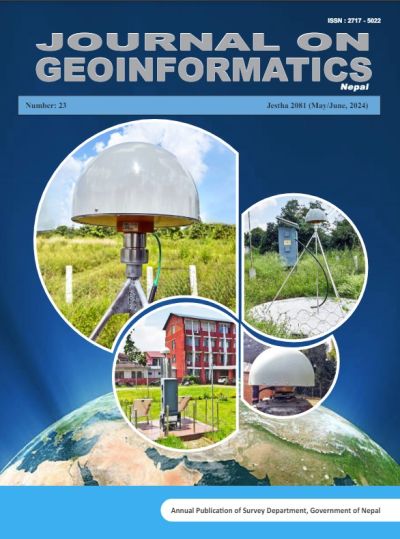Comparison of the Direct Supervised Classification and Segment Mean Shift Classification: A Case Study of Hetauda Sub-Metropolitan City of Nepal
DOI:
https://doi.org/10.3126/njg.v23i1.66048Keywords:
Segment Mean Shift, Supervised Classification, Land Use Land Cover, Training Samples, Point SamplingAbstract
Comparison between Land Use Land Cover (LULC) classification and methods is a common practice to assess their suitability and reliability in specific areas. In the case of Hetauda Sub-Metropolitan City in Nepal, Sentinel-2B satellite imagery was utilized to evaluate the accuracy of LULC classification through both direct supervised classification and segment mean shift classification. Direct supervised classification was conducted in ERDAS Imagine, while segment mean shift classification was performed in ArcGIS to identify six LULC classes: forest, agriculture, built-up area, bare area, grassland, and waterbody. Pre-processing steps such as layer stacking, mosaicking, data extraction, atmospheric and radiometric correction were employed to enhance the imagery. Training samples were chosen via visual interpretation based on local knowledge to train the Maximum Likelihood Classifier (MLC). The results revealed that the segment mean shift method achieved the highest overall accuracy at 90%, whereas direct supervised classification yielded 85%. Furthermore, kappa statistics indicated a strong level of agreement, with segment mean shift scoring the highest at 0.88 and direct supervised classification at 0.81. Individual class accuracies varied, with forest classification being the most reliable at 98% and waterbody classification at 71%. Overall, the segment mean shift method was deemed more accurate and suitable than the pixel-based direct supervised classification for LULC classification in Hetauda Sub-Metropolitan City, Nepal.




